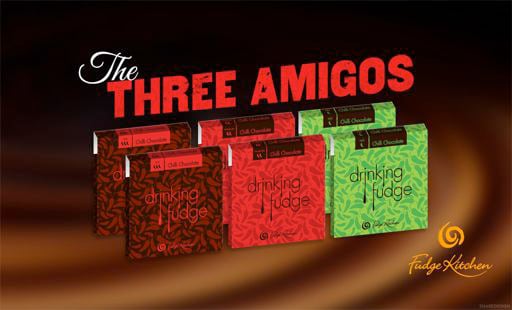Sian Holt, Fudge Kitchen managing director, was at ISM in Cologne for the first time earlier this month searching for international customers.
“Outside of the English speaking nations –Australia, Canada, New Zealand and the States – fudge doesn’t exist. It actually doesn’t exist – there isn’t a word in their language, you can’t translate it,” she told ConfectioneryNews. “The first thing we have to do is explain that it’s a premium British confectionery.”
Growing export business
Fudge Kitchen is aiming to bring the confection to non-English speaking markets after branching out from its eight-store UK retail network into wholesale three years ago. The firm’s sales come mainly through its own stores and wholesale currently accounts for around 30% of the business, but Holt said: “I expect in time that it will overtake it.”
“We have begun to get an increasing number of buyers from abroad approaching us to say can we have you details, but export is absolutely tiny for us at the moment. “
The company only began to export around nine months ago, serving customers in Kuwait, Australia, New Zealand, Italy, Holland, Belgium, France and Germany.
Scandinavian and Spanish interest at ISM

“I decided to come to ISM to get business and understand how export might work for us,” said Holt. “The Scandinavians, people from Finland, Norway and Demark absolutely love it.”
She continued: “We’ve had quite a lot of interest from Spain, which I found surprising as the French, the Spanish and perhaps the Italians too, tend to have a less sweet tooth than us British.”
Holt said she was also expecting interest from the Netherlands as it was Dutch consumers who always bought the most fudge in the company’s own-stores.
“We will most definitely be sitting on a British platform. A very important element will be that it’s handmade in the UK,” she added.
Direct to retailers
But Holt admitted that the handmade production method and the short shelf life of its gourmet fudge (6-8 months) were limiting factors.
The company is therefore hoping to sell directly to retailers or at least through importers that sell straight to retailers rather than through a third party.
“As a value rather than volume brand, because we are handmade, there generally would not be the margin to go through a multi-distribution route. There are too many layers and not enough money in it for all of us,” said Holt.
Capacity constraints
The company began producing from a standalone facility in Kent, UK, last year.
“We can increase production by employing more people but whatever our volume is we will continue to produce it in the same way we do now, which is entirely by hand,” said Holt.
“I can already foresee that we will have to increase production for the year ahead. If export really became an avenue of real potential for us there may even be possibilities of having production somewhere else to service another part of the world - because with a shelf life of six months, it could be quite a market limiter.”
